Five Family Favorites: Leading Bloggers Share their Family Favorite Books, #1
By Nicki Richesin, The Children’s Book Review
Published: April 8, 2012
We’re very happy at TCBR to unveil our first installment of a new monthly column called Five Family Favorites by leading family, parenting, and book savvy bloggers. To kick-off our first FFF, we give you the lovely Catherine Newman of Ben and Birdy fame. Catherine is author of the award-winning memoir Waiting for Birdy and a frequent contributor to many anthologies including Crush and Because I Love Her. She is also editor of ChopChop, The Fun Cooking Magazine for Families. We’re thrilled to share her family’s all-time favorite books. Enjoy!
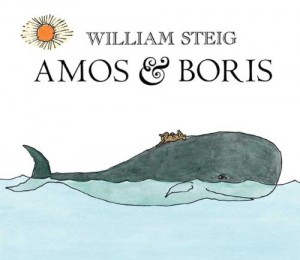 Amos and Boris
Amos and Boris
I actually wanted to name our son Boris—but, sadly, my partner did not share my enthusiasm. “Bwo-ris,” I said emphatically, with my grandmother’s Russian accent. “No?” No. Nonetheless, the book, a favorite from my own childhood, became and has remained a favorite in our household as well. If you know Sylvester and the Magic Pebble or The Amazing Bone, then you’re already familiar with William Steig’s delightfully watery illustrations and refreshingly literate text. This book is no exception, and it is a joy in every way. Amos, a seaside mouse filled with an explorer’s curiosity, builds a boat, loads it with provisions (this catalogue of goods—including biscuits, acorns, honey, and a yo-yo—is the children’s favorite part) and sails away. All goes swimmingly, until:
One night, in a phosphorescent sea, he marveled at the sight of some whales spouting luminous water; and later, lying on the deck of his boat, gazing at the immense, starry sky, the tiny mouse Amos, a little speck of a living thing in the vast living universe, felt thoroughly akin to it all. Overwhelmed by the beauty and mystery of everything, he rolled over and over and right off the deck of his boat and into the sea.
Holy clam and cuttlefish! But just as Amos is wondering what it would feel like to drown (I have always loved the existential candor of this part, though other parents may want to edit) along comes Boris the whale. What follows is a touchingly profound story about unlikely friendship and lifelong loyalty, with an excellent powerful-things-come-in-small-packages message to boot: while Amos cannot reciprocate in strength, he has the intelligence to help Boris in turn, when the big, big-hearted whale needs it most. (Ages 5-8. Publisher: Square Fish)
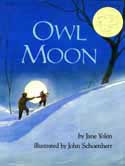 Owl Moon
Owl Moon
By Jane Yolen
Interestingly, my daughter has always thought that the little unnamed, bundled-up child in this book was a girl—and my son has always assumed it was a boy. It’s that kind of book: quiet and close, and it feels like what it’s about is you. A child and his or her father go out at night, in the deep winter woods near their farm, to see if they can spot any owls. And, towards the book’s end, they spot one. That’s it—but John Shoenherr’s wintery, realistic illustrations are so exquisitely moonlit and lovely, and the story is so profoundly quiet and reverent, that a deep feeling of peace has always descended over us each of the million times we’ve read it. It’s one of Jane Yolen’s serious stories, which means you can read the beautiful, almost poetic text in your regular voice, which I remember finding tremendously relieving when the kids were very young, and so much else was lilting and frantic. And the children are always moved by the silent heroism of the child, who must remain calm and still if she wants to see an owl—even though it’s cold and dark in the woods, and a bit creepy. “But I never called out. If you go owling you have to be quiet, that’s what Pa always says. I had been waiting to go owling with Pa for a long, long time.” We still quote our favorite all-purpose line about a kind of Zen journey-not-the-destination spirit of acceptance:
My brothers all said
sometimes there’s an owl
and sometimes there isn’t.
So true. (Ages 4-8. Publisher: Penguin Group)
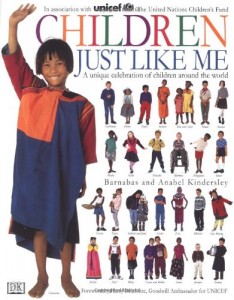 Children Just Like Me
Children Just Like Me
By Anabel and Barnabas Kindersley
We know these kids so well, it’s as if my own children have grown up with them: Erdine from Mongolia, who lives in a yurt; Suchart, a 12-year-old Thai orphan who lives as a Buddhist monk, in a tiny metal shack on stilts with no toys; Celina from Brazil, with her fascinatingly widely-spaced toes, and the baffling fact that she’s not afraid of snakes. We’ve had our favorites over the years, but we’ve loved them all—these kids who are from all over the world, and who are profiled through excellent, meticulously thoughtful photography and journalism: we see their families and homes and schools, their houses of worship, favorite toys and meals, their friends and clothing and pets. The photographs are supplemented by terrific quotes from the kids, including their dreams for the future, and it combines to give you a vivid sense of their differences (and of global economic injustice) even as it reminds you that so much of childhood is universally experienced: kids want to play and learn and find meaning; they want to feel loved and safe and hopeful. (“Wow, those children are just like me!” my kids have always cried, with no irony whatsoever.) Over the years, the book has prompted lots of conversation about privilege and hardship, without ever bonking us over the head with a moral hammer. Oh, but the kids are so beautiful that you will be a little bit heartbroken. And also, yes, you will figure out that the children must all be young adults by now, but there’s still no “Where are they now?” follow-up. Believe me, we’ve looked. (Ages 8-11. Publisher: DK Publishing)
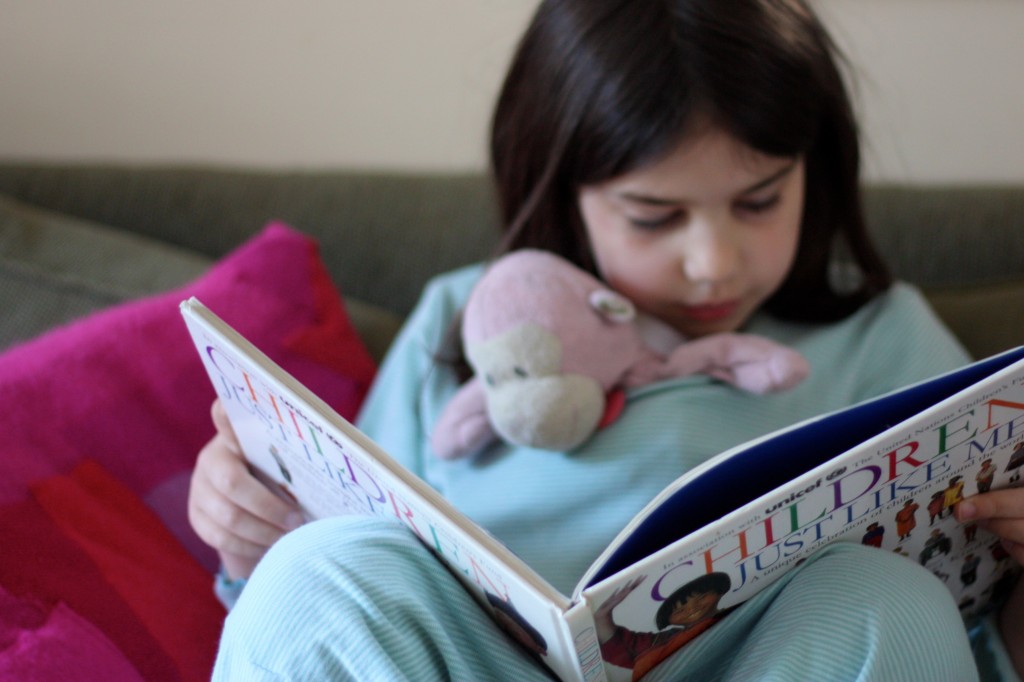
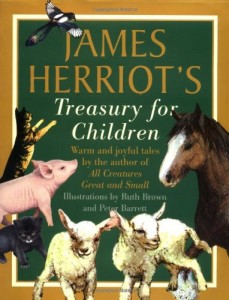 James Herriot’s Treasury for Children
James Herriot’s Treasury for Children
Full disclosure: we are rabid James Herriot fans. I read all the All Creatures Great and Small books as a teenager, and we have listened to the series with our own kids, on tape, in its entirety. But for animal-loving children who might want to read (or be read) the delightful tales of an English country vet, but who might not be ready for the whole arm-in-up-to-the-shoulder bovine-vagina obstetric interludes, this is the perfect introduction. For one thing, this collection of eight edited stories is stunningly illustrated, with tender, vividly realistic watercolors of sweet-faced animals and wild Yorkshire landscapes. For another, it’s filled with the kinds of (true) stories children love: miraculously cured dogs, lost-and-found lambs, cats adopted in the nick of time. Each story takes ten or fifteen minutes to read aloud, which is perfect. Our kids’ favorite has always been “Market Square Dog”: “I really like the illustrations, and I love that it has a happy ending, rather than a kind of bittersweet new-beginning type of ending,” explains my son Ben (referring to another, sadder tale, “The Christmas Day Kitten,” in which an ailing stray cat brings her kitten to safety before dying). And he’s right to love it: it’s classic James Herriot, complete with a little British humor and a lot of good will (and none of the hard drinking or soft womanizing of the chapter books). Overall, it’s just a beautiful and timeless collection—the kind of book that puts the treasure in treasury—and we’ve given it as a gift countless times. (Ages 4-8. Publisher: St. Martin’s Press)
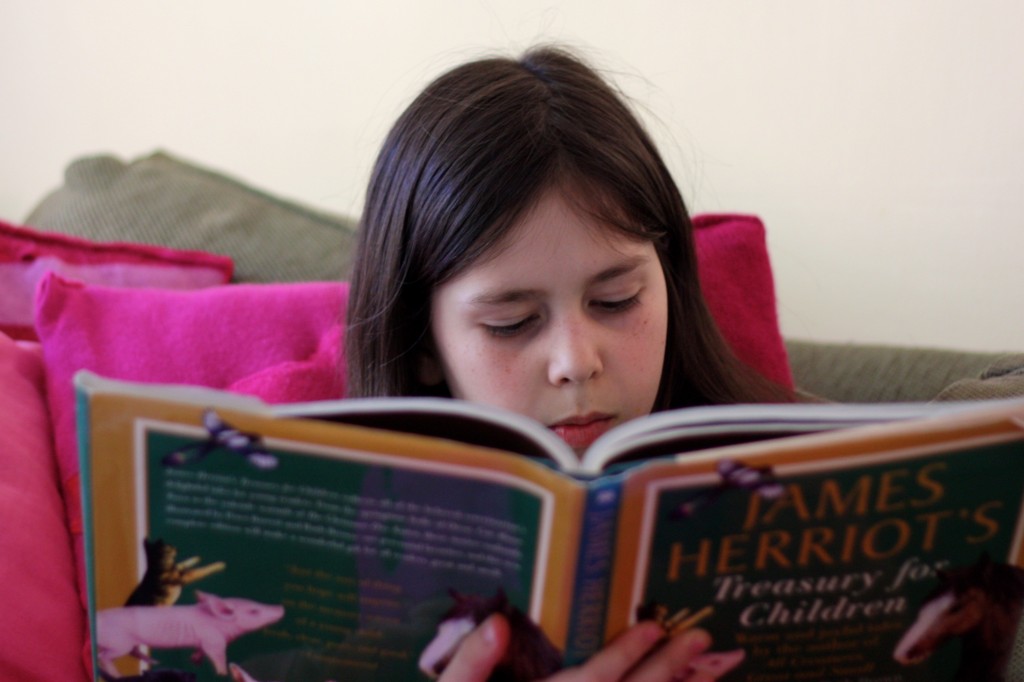
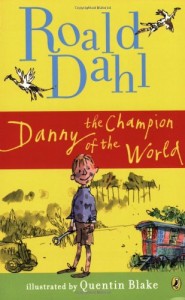 Danny the Champion of the World
Danny the Champion of the World
By Roald Dahl
This is a great read-aloud chapter book, in part because it’s so nuanced and complicated you almost don’t want your kids reading it alone in their rooms, where you can’t even harass them about what they’re feeling and why. Danny’s mother has died, and he and his good father live alone in a caravan. This alone makes the book special: my daughter Birdy just now recalled, “I really liked hearing about him and his father in the wagon, because it gives you such a cozy feeling, as if you’re right there.” In that way, then, this is not your typical ogre-addled fantasy-fiction Roald Dahl: the boy and his father plot to thieve prized pheasants from a rich jerk—a kind of benevolent-vigilante Robin-Hood-style of justice—and the book manages to be utterly magical but not the least bit surreal. I say that as a life-long fan of James and the Giant Peach and Charlie and the Chocolate Factory, and as a newer fan of Matilda and The BFG—they are marvelous books all, filled with the kinds of crashing kids-on-top-of-the-world crescendos that children cherish. But Danny the Champion of the World is a little different: a lovely and wonderful book about a parent and child, about loss and connection, and about the subtle, important complexity of right and wrong. “Who are the actual bad guys?” Ben wondered, when he and I read it together years ago—but honestly? He already knew. (Ages 7-12. Publisher: Penguin Group)
Bonus non-literary book: Wreck This Journal, our current go-to gift for kids aged 7 to 15. Creativity guru Keri Smith offers blank pages topped with hand-lettered instructions for self-expression, many of which contribute to the book’s eventual destruction: “Poke holes in this page using a pencil.” “Color this entire page.” “Scribble wildly, violently, with reckless abandon.” “Fill this page with circles.” “Chew on this page.” The prompts for creative abandon are terrific, and the thrilling naughtiness of writing in, spitting on, coloring over, and ruining an actual book has never gotten old for my kids: their copy looks like an artifact from an archaeological dig—or like a horse dragged it behind him on a rope, across a gritty desert puddled with toothpaste blobs and soup.
Catherine Newman, mother of Ben, 12, and Birdy, 9, is the author of the award-winning memoir, Waiting for Birdy (Penguin) and a regular contributor to lots of magazines, including FamilyFun, O: The Oprah Magazine, Real Simple, Whole Living, and the nonprofit family cooking magazine ChopChop, which she edits. She lives in Western Massachusetts and practically camps out at her local library.
Nicki Richesin is the editor of four anthologies The May Queen, Because I Love Her, What I Would Tell Her, and Crush. She is a regular contributor to Huffington Post, Daily Candy, 7×7, Red Tricycle, and San Francisco Book Review. Nicki has been reading to her daughter every day since she was born. For more information, visit: https://nickirichesin.com/.
